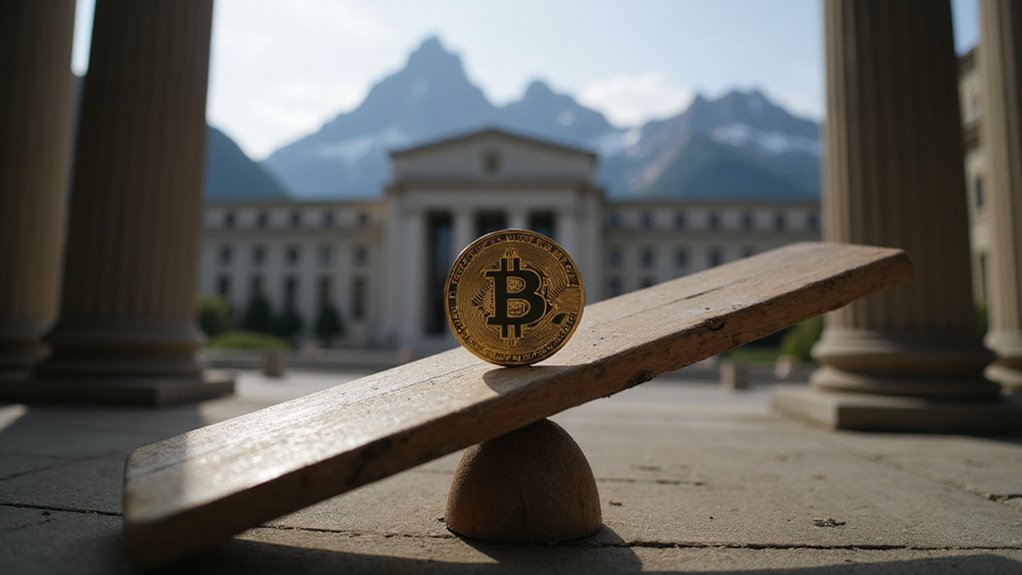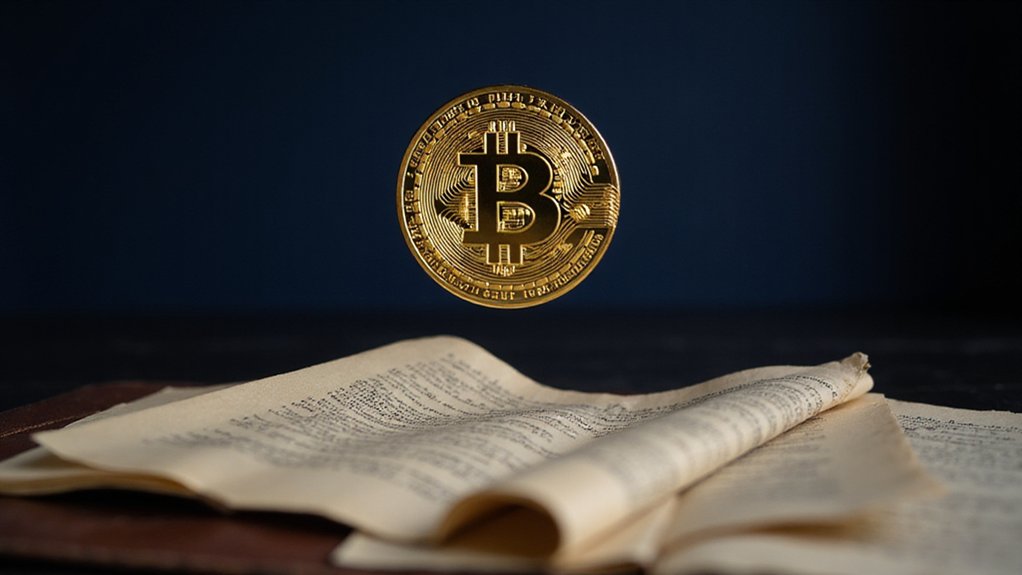The peculiar alchemy of central banking rhetoric struck again as Federal Reserve Chair Jerome Powell‘s Jackson Hole address sent Bitcoin careening from below $112,000 to near $115,800—a roughly 2% surge that reminded markets why traders hang on every syllable uttered by the world’s most influential monetary policymaker.
Powell’s cautiously optimistic tone carried implicit dovish undertones that crypto markets seized upon with characteristic enthusiasm. The Fed chair’s emphasis on policy flexibility and data dependence, coupled with the abandonment of intentional inflation overshoot strategies in favor of flexible inflation targeting, signaled a potential pivot toward accommodation—music to Bitcoin maximalists’ ears who view loose monetary policy as rocket fuel for digital assets.
Powell’s dovish pivot toward policy accommodation sent crypto markets into euphoric overdrive, validating Bitcoin maximalists’ monetary thesis.
The pre-speech market positioning revealed the schizophrenic nature of crypto sentiment. Options markets displayed heightened demand for put protection, with risk reversal metrics showing a 6-vol premium favoring downside hedges. Traders had braced for moderate volatility around ±2%, yet the actual response demonstrated how quickly bearish positioning can morph into relief rallies when central bankers strike the right chord.
What makes this rally particularly intriguing is the broader context of declining market sentiment—the total crypto market cap had shrunk 1% to $3.9 trillion before Powell spoke, while Bitcoin itself had shed 5% over the preceding week. Even the S&P 500’s modest 0.3% decline reflected widespread caution, making crypto’s post-speech exuberance all the more notable. The volatility occurred against a backdrop where recent inflation reports have significantly influenced market expectations, with July’s 2.7% inflation increase initially triggering Bitcoin’s surge to all-time highs before subsequent producer price data tempered enthusiasm.
Historical precedent suggests Powell’s Jackson Hole appearances can trigger substantial Bitcoin rallies, with some past dovish signals coinciding with gains exceeding 200% in subsequent months. Yet this time, the Fed chair stopped short of definitively signaling imminent rate cuts, leaving September meeting speculation to fuel continued volatility. The current economic environment shows GDP growth has decelerated to just 1.2 percent in the first half of the year, down from 2.5 percent in 2024, which could influence the Fed’s approach to monetary policy accommodation. The surge also highlighted Bitcoin’s role in the evolving DeFi ecosystem, where traditional monetary policy continues to drive investor interest toward decentralized alternatives.
The speech’s emphasis on maintaining maximum employment while preserving price stability—removing previous binding constraints language tied to the effective lower bound—hints at policy recalibration that typically benefits risk assets.
Whether this translates into sustained Bitcoin momentum depends largely on September’s actual Fed decision, but for now, the digital asset has reminded skeptics why central bank communications remain its most reliable catalyst.








